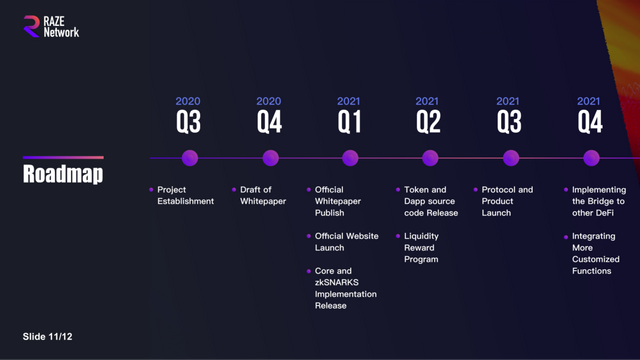An overview of the three major directions of privacy algorithms and analysis of Polkadot's cross-chain privacy middleware Raze Network
The germination of the concept of "privacy" began in the 12th century, and its meaning expanded from "what is fair" to include "a right—a person's right to control or claim something." Perhaps in wartime, privacy It is usually understood as "freedom" . In today's Internet age, this is called "privacy" .
With the rapid development of the Internet and various modern smart devices, in addition to bringing convenience to people’s lives, inadvertently they will find that their privacy has been taken away, and privacy is essential to almost every aspect of our lives. Indispensable, for the importance of privacy, to borrow a sentence from Edward Snowden, the protagonist of "Prism Gate":
Arguing that you don’t care about privacy because you have nothing to hide is the same as saying that you don’t care about freedom of speech because you have nothing to say.
Raze birth background
With the rapid development of the blockchain industry, the identity, behavior, and interactive content on the chain have become more and more transparent. In this context, encryption enthusiasts have higher and higher demands for privacy protection .
Among the projects focusing on privacy and anonymity, the earliest project that focused on privacy and anonymity was Zcash , and it was also the first project to use the zero-knowledge proof algorithm zkSNARKs to hide transaction data and ensure the anonymity of transaction addresses and amounts.
However, because Zcash cannot anonymize smart contracts , it cannot meet the increasing DeFi demand and application expansion, as well as a large number of anonymous transaction needs caused by market expansion. In addition, because the verification process relies on trusted A valid certificate generated by a third party , therefore, also brings a certain degree of uncertainty.
In response to this problem, Raze Network aims to provide a technical solution to reverse the privacy dilemma that people need to sacrifice private information to use the services provided.
"Privacy is one of the factors that promote the development of the cryptocurrency world. This element is often given a negative meaning, as if it is just to hide illegal activities, but in fact, privacy is essential to almost every aspect of our lives. : No data is more sensitive than our payments. They are indicators of our personal wealth. They reveal our personal and intimate preferences. These payments speak for us, so keeping them confidential is vital.”
This is what Raze Network is doing .
The privacy track ushered in rapid development
After the advent of Zcash, a series of projects focusing on anonymity and privacy have appeared in the market, such as Quorum ZSL, Nightfall, etc. Although these projects apply the zkSNARKs algorithm to smart contracts, they have some performance issues , such as:
- Proof that the cost of generating is too high, which leads to a long verification process
- The gas fee required for the entire process is relatively high. According to Ernst and Young, transactions in Nightfall require approximately 2.7 million gas fees.
- The trusted installer requires a valid certificate generated by a trusted third party
The above problems hinder the development of the project, and it is difficult to meet the needs of users, and the bottom layer of the decentralized blockchain is easily manipulated by trusted third parties.
Next-generation privacy solution: Raze Network
Raze Network came into being, deployed in the Polkadot Substrate framework , integrating the open source privacy protocol Zether privacy algorithm and Shrubs Merkle Tree algorithm to propose a new and more efficient zero-knowledge proof mechanism, namely the Σ-Bullets algorithm , which can reduce Gas fee, while providing anonymity and privacy.
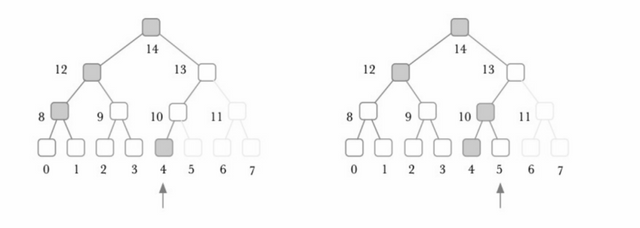
Shrubs Merkle Tree algorithm example, source: white paper
On the other hand, since DeFi in the Polkadot ecosystem is in a stage of vigorous development, and its underlying facilities are also in a stage of continuous construction and improvement, Raze chose to join the Polkadot ecosystem , which not only enhances privacy for the DeFi protocol, but also brings More ecosystem fluidity .
Privacy track horizontal comparison
- Privacy Project in the Polkadot Ecosystem
In Polkadot ecology, the current protocol that belongs to the same privacy track as Raze Network is Manta Network, but its project focuses on protecting the privacy system of DEX . Raze is compatible with the most critical liquid mining and anonymous mining functions in DeFi, so The application scenarios will be broader.
From a technical point of view, the network in Manta’s zero-knowledge proof scheme requires trusted third-party settings. The zero-knowledge proof scheme adopted by Raze does not require any trusted settings. All public parameters of the system can be set from the basic group. Random sampling in a completely transparent way to ensure the degree of decentralization.
Therefore, Manta Network and Raze Network have some differentiated positioning in terms of selected development direction, technology implementation, application scenarios, etc. In addition, Raze Network itself also has several major characteristics.
- Three directions of smart contract privacy algorithms
At present, privacy and anonymity projects based on smart contracts can be divided into the following three categories according to their privacy algorithms :
The first category is that projects are based on zero-knowledge proof algorithms and do not require credible initialization, represented by Zether and zkSync . These projects mainly focus on the anonymous payment and transaction of cryptocurrencies . Raze is also a member of this track. The main features of each project are as follows:
- Raze is developed based on the Polkadot Substrate framework, allowing users to operate DeFi applications through Polkadot or cross-chain
- Raze has an efficient Σ-Bullets algorithm , which greatly reduces the size of the proof, verification time and gas cost
- Raze is committed to creating a privacy token ecosystem . In the future, it plans to develop DEX, lending and cross-chain products based on Raze Chain. It will also deploy a common privacy solution public chain on multiple blockchains to create a collaborative ecosystem.
The second category of projects is based on the TEE Trusted Computing Environment algorithm, represented by Oasis and Phala . These projects are mainly dedicated to the realization of data privacy calculations.
The third category is other anonymous algorithm projects, such as Nucypher, PlatoN and Tornado . For example, Nucypher uses the Umbral PRE algorithm, and Tornado uses the "currency hybrid algorithm".
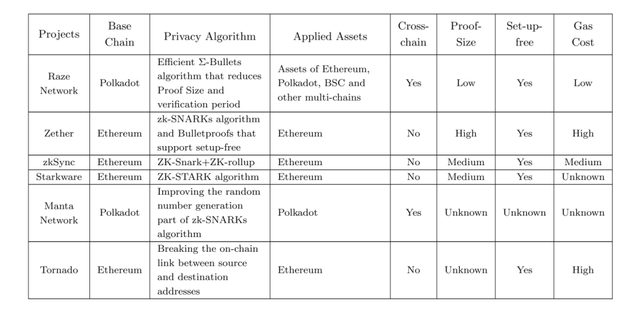
Source: white paper
Keep up with the Polkadot and DeFi boom
Raze Network is a two-layer protocol that provides privacy protection during cross-chain payments for the DeFi stack of the entire Polkadot ecosystem . It has cross-chain interoperability and huge composability .
The Zether framework is designed specifically for the Ethereum account-based model, so it naturally promotes the market 's demand for cross-chain private payment of ERC20 tokens. In the Polkadot ecosystem, since all modules are built on the Substrate framework, Raze Network is compatible with tokens issued in the Polkadot ecosystem, such as DOT or KSM .
Therefore, the Raze contract can support both the tokens issued in the Polkadot ecosystem and the cross-chain privacy payment of ERC-20. In addition, due to the cross-chain interoperability of Raze, the liquidity of the Polkadot ecosystem will be improved. Through the RAZE VM integration mechanism, it can be combined with any DeFi or Web 3.0 product and minted privacy tokens at a 1:1 ratio .
On April 6, Raze Project Lead and Justin Kellison were a guest at CryptoJ AMA "Raze Network-Building Cross-chain Privacy Middleware for DeFi and Web 3.0", revealing that because Raze can be combined with any blockchain that supports smart contracts, the target market Very large, Ethereum, Polkadot and Binance Smart Chain will all become the first choice .
In addition, the goal of Raze Network is to achieve privacy protection in cross-chain payment and DeFi systems, while ensuring the transparency of assets and behavior through reasonable supervision. In the end, Raze Network will realize the anonymization of all cryptocurrencies on the chain .
Privacy tokens will be minted on the second-tier network and absorb liquidity from various DApps and blockchains . Therefore, it can be said that Raze Network is building cross-chain privacy middleware for DeFi and Web 3.0 .
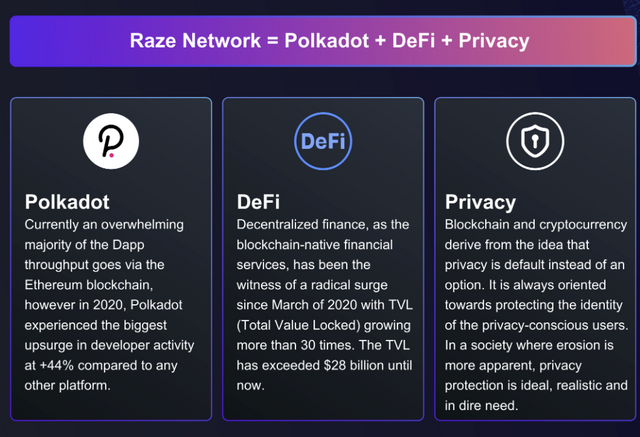
In-depth disassembly of Raze solutions and project features
The basic operating logic of Raze Network is to mint new privacy tokens with the basic tokens of the contract at a ratio of 1:1, which has three technical functions :
- Minting: Convert any token into an anonymized version of itself
- Redemption: Convert anonymized tokens to their original form
- Transfer: realize the anonymous transfer of tokens, while hiding the payment method and the identity information of the recipient and the number of transfers
For users, the operations of minting and redeeming tokens are very simple:
- Users only need to go to a DApp (Uniswap, Aave, PancakeSwap), directly mint the anonymized version of the token on the platform and use the service of the DApp in a completely anonymous manner
- When the entire transaction is completed, the tokens can be restored to their original form by restoring the formation.
- The entire process is very simple, but in this way the entire transaction behavior is anonymized, and no one can track it.
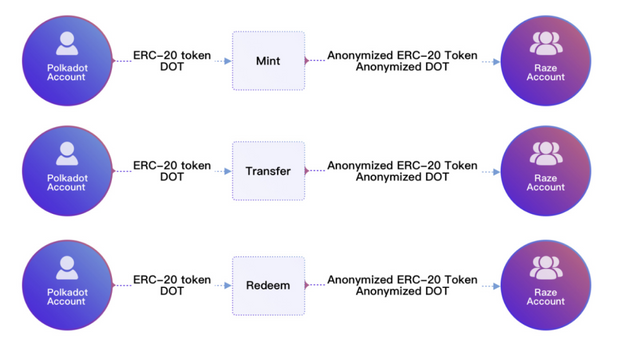
Example of basic operation logic, source: white paper
Three characteristics
- Unlimited & seamless : Connect DeFi or Web 3.0 products and improve the performance of existing decentralized applications through RazeVM
- Encryption-friendly & tradable : through the creation of privatized tokens, non-physical privacy can be traded by users
- Decentralization & Interoperability : The Substrate framework provides interoperability for RAZE. Raze Network is an open source decentralized project.
Team part
- Project Lead: Justin Kellison
Justin has 4 years of experience in the encryption industry and is an active marketer and developer. He has worked on many DeFi projects. He and his professional marketing team have helped to increase product awareness and show good results.
- Strategic Advisor: Dylan Dewdney
Dylan Dewdney has been in the blockchain industry since 2011. He is a veteran crypto enthusiast. In 2017, he co-founded Harbour DAO with others. This project became a set of open governance structures and voting mechanisms on ERC 20. Standard tools. After that, he served as the chief evangelist of Beam and the head of growth of AdEx. He is currently the CEO of Kylin Network.
- Marketing Consultant: Garlam Won
Garlam Won is the former marketing director of Harmony, and is also responsible for the marketing of some DeFi and NFT projects. As a former investment banker of JPMorgan Chase and a former management consultant of Deloitte, Garlam exerts an influence in all parts of the blockchain ecosystem through in-depth connections with communities in China, South Korea, Canada, and the United States.

Some team members show, source: official website
Financing background
In early March, Raze Network announced the completion of a seed round of financing . Investors include Signum Capital, AU21 Capital, CMS Holdings, Master Ventures, Spark Digital Capital, PNYX, Moonwhale and Flurry Capital.
Raze Network CEO Justin Kellison said that Raze Network will bring privacy protection attributes into the DeFi ecosystem full stack, and is currently focusing on developing the first privacy product Multi-chain Privacy Cloak.
At the end of March, Raze Network completed a $1.7 million private equity round of financing . OKex Block Dream Fund, Tenzor Capital, Arpa Labs, X21 Digital, Kyros Ventures and other institutions participated in this round of investment. In addition, seed round investment institutions AU21 Capital, Signum Capital, Master Ventures and Spark Digital Capital made additional investments in this round.

Strategic investor, source: official website
Raze ecology and product application
Raze Network can be combined with any DApp or Web 3.0 products such as Uniswap, Aave, StaFi, PancakeSwap, Compound, etc. and use their services in a completely anonymous way ( lending, pledge mining, financial derivatives, transactions, etc.) ).
Raze Network is not limited to a single service, blockchain or ecology like other privacy track projects, but is constantly evolving in order to be able to create a native privacy ecosystem based on Raze in the future , including Raze Swap, Raze Lending Platform and Raze Cross Chain transfer bridges , these will be established in Raze's privacy protection network, and will connect all involved transactions through the token RAZE.

Raze Swap
By completing decentralized privacy token transactions through the Raze Network, users can use RAZE to ensure that the payer and receiver can trade any tokens on any blockchain while ensuring privacy.
Raze Lending
The Raze lending platform can provide mortgage lending services for all privacy tokens issued by Raze, thereby providing a variety of privacy token application scenarios.
Raze loan products can help privacy token holders to provide banking services . Users can deposit their privacy tokens into the Raze loan contract and earn interest. They can also borrow required privacy tokens from Raze loan products for use Activities such as mining or arbitrage , such as hedging in the secondary market.
RazeVM
Raze will further upgrade the Σ-Bullets privacy algorithm to a RazeVM virtual machine compatible with other public chains . Raze will also be deployed on different public chains such as Ethereum , BSC, and HECO.
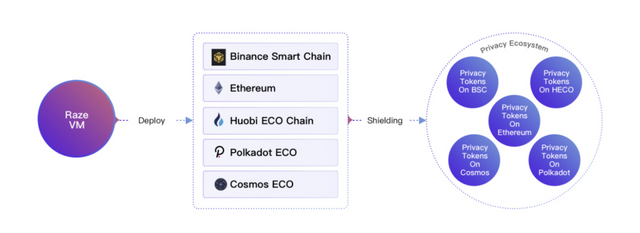
Raze cross-chain bridge
The Raze cross-chain bridge can connect assets on public chains such as Bitcoin, Ethereum, Polkadot, BSC, and Raze, and create privacy tokens through privacy contracts. In other words, these tokens can be circulated in DeFi applications such as Raze Swap and Raze Lending , and token holders can also conduct private and anonymous transactions.
At the same time, Raze Bridge will allow users to exchange the privacy tokens in their Raze account back to the original blockchain , realizing the asset interoperability between the mainstream public chain and the Raze ecosystem .
Token part
The native token of Raze Network is RAZE , and the total supply of tokens is 120 million . RAZE tokens are indispensable as fees in all transactions . This is one of the most important functions of RAZE tokens.
In addition, RAZE is also a privacy protection token and can function as a governance token . The community can initiate a proposal on protocol changes through the token RAZE and implement it through voting.
The token RAZE can also be used as a reward for liquidity supply to incentivize liquidity supply behavior in a decentralized ecosystem.
At the same time, a small part of the transaction fee will be destroyed , so in general the supply of token RAZE will maintain a deflation mechanism .
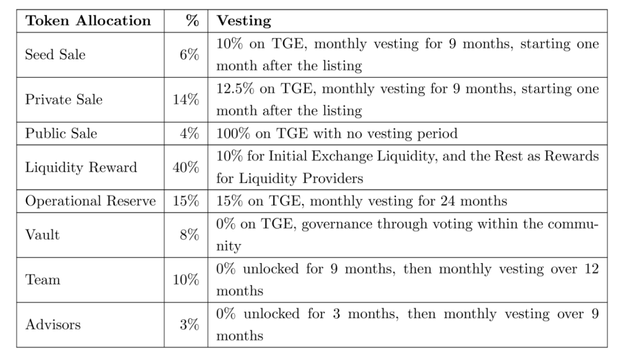
- Public offering
Raze Network will launch IDO on Bounce, Poolz and DuckStarter from April 12th to 13th, with a token price of US$0.25. In addition, Raze Network will open a 72-hour Balancer LBP at 21:00 on April 13, and will launch Uniswap trading on April 16, with public offerings accounting for 4% of the total .
Near-term planning
Raze Network is currently developing smart contracts based on Substrate, which include the function of minting and restoring privacy tokens.
The report submitted to Certik for audit will be announced soon. The project is expected to go online in Q3 2021. Raze Swap, Raze Lending and Raze cross-chain transfer bridge are all included in the roadmap.
Raze Network has reached cooperation with many DeFi agreements to integrate RAZE VM components, including KardiaChain, MantraDao, Kylin Network, Phantasma, OMNI, Bella, etc., and is striving to establish more partnerships.
